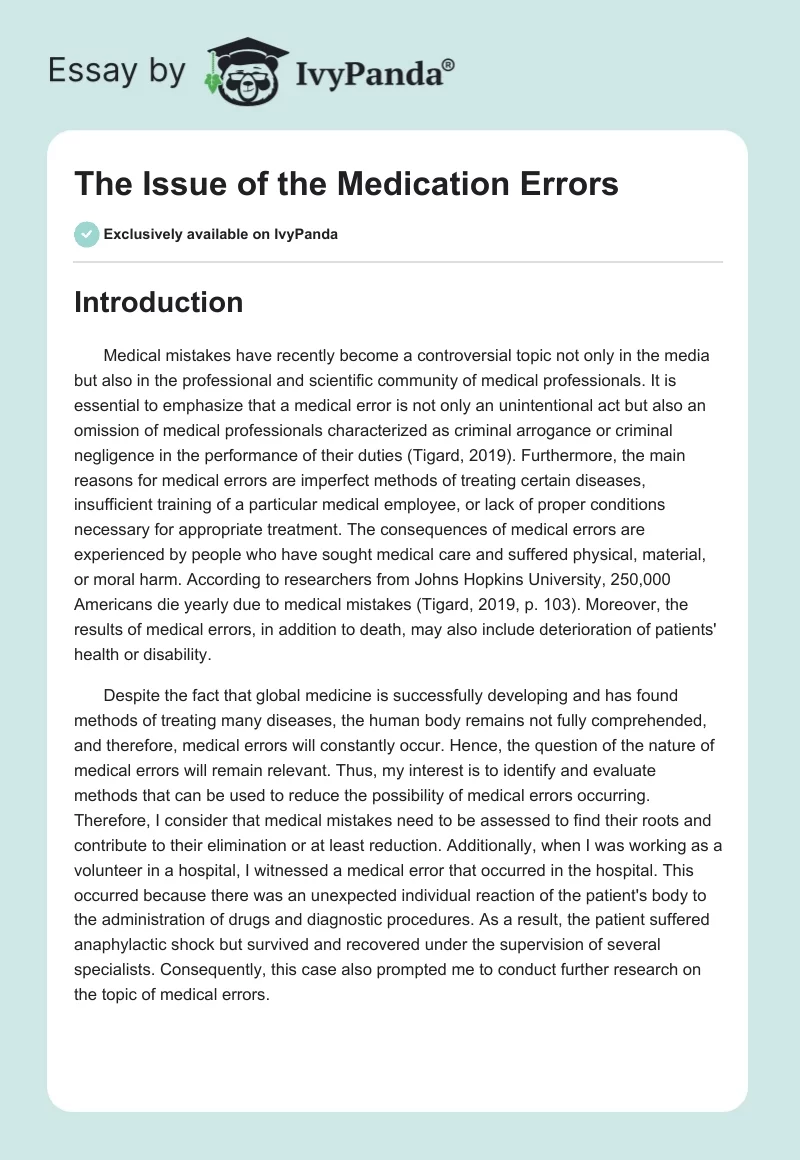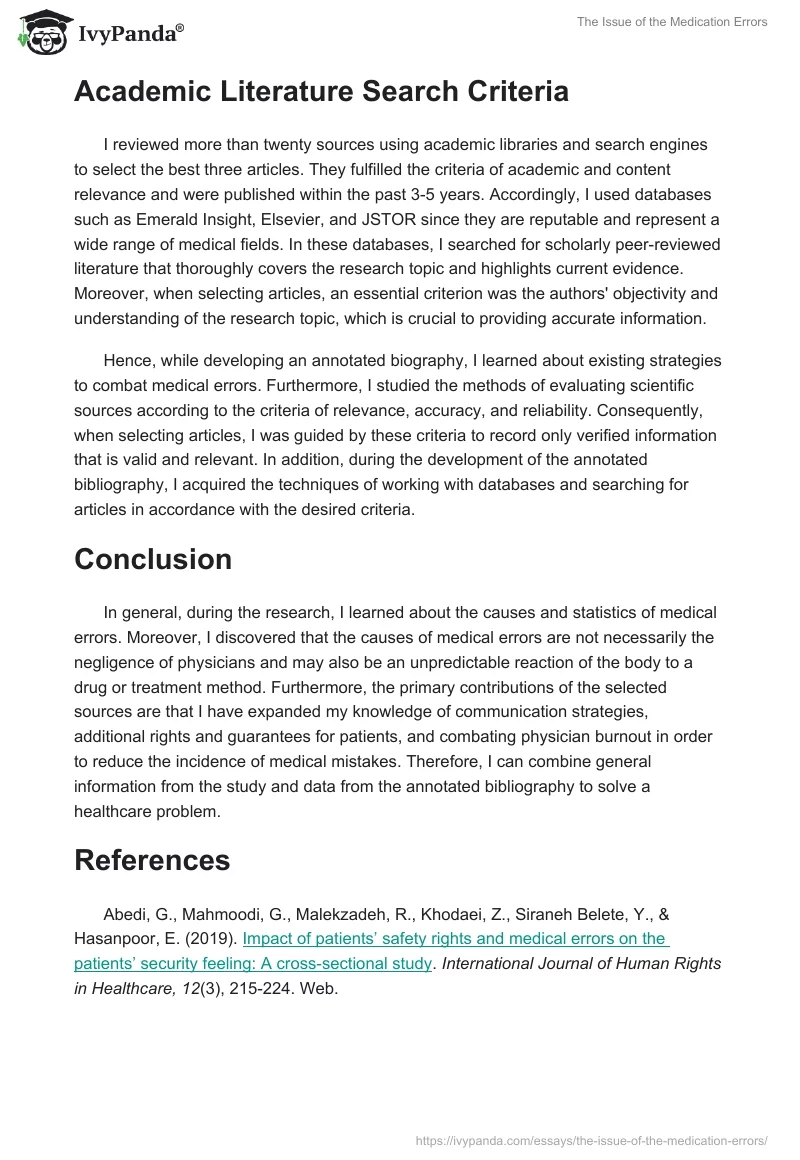Introduction
Medical mistakes have recently become a controversial topic not only in the media but also in the professional and scientific community of medical professionals. It is essential to emphasize that a medical error is not only an unintentional act but also an omission of medical professionals characterized as criminal arrogance or criminal negligence in the performance of their duties (Tigard, 2019). Furthermore, the main reasons for medical errors are imperfect methods of treating certain diseases, insufficient training of a particular medical employee, or lack of proper conditions necessary for appropriate treatment. The consequences of medical errors are experienced by people who have sought medical care and suffered physical, material, or moral harm. According to researchers from Johns Hopkins University, 250,000 Americans die yearly due to medical mistakes (Tigard, 2019, p. 103). Moreover, the results of medical errors, in addition to death, may also include deterioration of patients’ health or disability.
Despite the fact that global medicine is successfully developing and has found methods of treating many diseases, the human body remains not fully comprehended, and therefore, medical errors will constantly occur. Hence, the question of the nature of medical errors will remain relevant. Thus, my interest is to identify and evaluate methods that can be used to reduce the possibility of medical errors occurring. Therefore, I consider that medical mistakes need to be assessed to find their roots and contribute to their elimination or at least reduction. Additionally, when I was working as a volunteer in a hospital, I witnessed a medical error that occurred in the hospital. This occurred because there was an unexpected individual reaction of the patient’s body to the administration of drugs and diagnostic procedures. As a result, the patient suffered anaphylactic shock but survived and recovered under the supervision of several specialists. Consequently, this case also prompted me to conduct further research on the topic of medical errors.
Academic Literature Search Criteria
I reviewed more than twenty sources using academic libraries and search engines to select the best three articles. They fulfilled the criteria of academic and content relevance and were published within the past 3-5 years. Accordingly, I used databases such as Emerald Insight, Elsevier, and JSTOR since they are reputable and represent a wide range of medical fields. In these databases, I searched for scholarly peer-reviewed literature that thoroughly covers the research topic and highlights current evidence. Moreover, when selecting articles, an essential criterion was the authors’ objectivity and understanding of the research topic, which is crucial to providing accurate information.
Hence, while developing an annotated biography, I learned about existing strategies to combat medical errors. Furthermore, I studied the methods of evaluating scientific sources according to the criteria of relevance, accuracy, and reliability. Consequently, when selecting articles, I was guided by these criteria to record only verified information that is valid and relevant. In addition, during the development of the annotated bibliography, I acquired the techniques of working with databases and searching for articles in accordance with the desired criteria.
Conclusion
In general, during the research, I learned about the causes and statistics of medical errors. Moreover, I discovered that the causes of medical errors are not necessarily the negligence of physicians and may also be an unpredictable reaction of the body to a drug or treatment method. Furthermore, the primary contributions of the selected sources are that I have expanded my knowledge of communication strategies, additional rights and guarantees for patients, and combating physician burnout in order to reduce the incidence of medical mistakes. Therefore, I can combine general information from the study and data from the annotated bibliography to solve a healthcare problem.
References
Abedi, G., Mahmoodi, G., Malekzadeh, R., Khodaei, Z., Siraneh Belete, Y., & Hasanpoor, E. (2019). Impact of patients’ safety rights and medical errors on the patients’ security feeling: A cross-sectional study. International Journal of Human Rights in Healthcare, 12(3), 215-224. Web.
Robertson, J. J., & Long, B. (2018). Suffering in silence: Medical error and its impact on health care providers. The Journal of Emergency Medicine, 54(4), 402-409. Web.
Shitu, Z., Hassan, I., Aung, M. M. T., Kamaruzaman, T. H. T., & Musa, R. M. (2018). Avoiding medication errors through effective communication in a healthcare environment. Malaysian Journal of Movement, Health & Exercise, 7(1), 115-128. Web.
Tigard, D. W. (2019). Taking the blame: Appropriate responses to medical error. Journal of Medical Ethics, 45(2), 101-105. Web.


